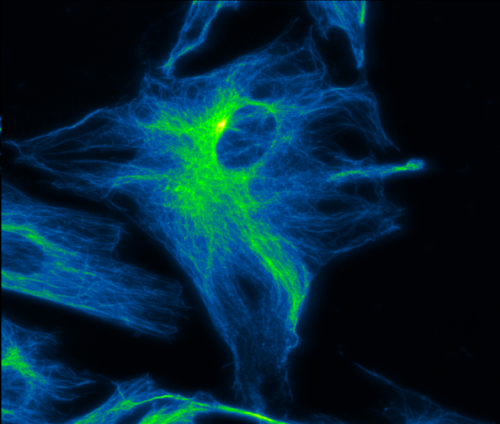What if we could draw up a map showing the complex organisation of cellular compartments, and use it to look up specific changes in this cellular organisation associated with a disease? It could tell us what has gone wrong in a certain pathway, so we know the specific molecules we will need to target to treat that disease. This is Vaishnavi Ananthanarayanan’s vision for the future…maybe far into the future.
For now, her research focuses on understanding the fundamental processes that govern dynamic cellular organisation, and how they are involved in cellular homeostasis. Vaishnavi uses live cell microscopy to watch coordinated trafficking and organisation, within living cells, to learn how they work when the cell is healthy, and also when things go rogue in the disease state.
Motor proteins are tiny machines that actively organise membrane-bound compartments inside cells, and shuttle important cargo from the plasma membrane to different destinations inside the cell. These motor proteins move along and interact with a structural network of microtubule filaments forming the cell’s cytoskeleton.
“We want to understand how motor proteins are regulated in living cells, and how dynamic interactions between microtubules and mitochondria could be playing a role in the progression of neurodegenerative disorders. In general, we aim to understand the global cellular changes that occur as a consequence of perturbation of the cytoskeleton and motor proteins in context of diseases such as cancer,” says Vaishnavi.
Apart from her research interests, Vaishnavi is actively involved within the research community addressing important issues associated with career development. On the importance of mentorship – at any stage of a career – she has spoken and written frequently about her experiences with mentoring and the value of seeking out mentors. To champion gender equity in STEM, she co-founded BiasWatchIndia, together with Dr Shruti Muralidhar, while working at the Indian Institute of Science in Bangalore. This grassroots movement documents representation of women in STEM fields in India, and challenges bias against women in the organisation of conferences and meetings in India.
Vaishnavi was named one of Journal of Cell Science’s ‘Cell scientist to watch’ in 2019, and joins UNSW Sydney’s Single Molecule Science as an EMBL Australia group leader in November 2020.
Learn more about Vaishnavi’s research
